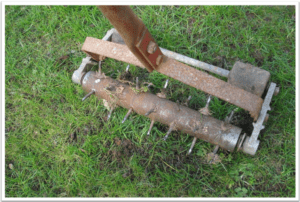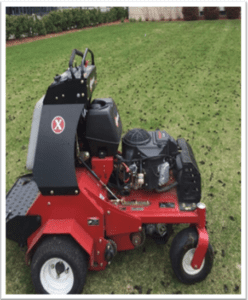Over time the growth of your lawn will make it more compact. While this is a good thing, because you want your lawn to be full and not spotty, eventually it will grow to be more compact than what is good for it. This is where aeration comes in.
Aeration is poking holes in your lawn to allow water, air, fertilizer, and nutrients to reach the root zone. Core aeration is digging and pulling out 2-3-inch plugs from your lawn. Poking holes in your lawn, called spiking, will work in the short run for superficial lawn issues. With older lawns, lawns with greater needs, and more dense soil core aeration will be a better solution.


A couple of tell-tale signs that your lawn needs aeration is if you see water pooling and draining off your lawn after watering or after a rain and heat stress, especially heat tracking. Heat tracking is when you have deadlines in your lawn where mower wheels have been. See our blog post about that if you would like more information.
As dense as our clay soil is here in Montana, we recommend core aeration in the spring and fall. It should be part of your lawn care routine along with watering, mowing, fertilizing, and power raking.